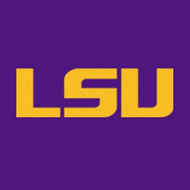预约演示
更新于:2025-05-07
LAU-0901
更新于:2025-05-07
概要
基本信息
非在研机构- |
权益机构- |
最高研发阶段临床前 |
首次获批日期- |
最高研发阶段(中国)- |
特殊审评- |
结构/序列
分子式C29H39Cl2N3O7 |
InChIKeyWZWJKBCMEZITJW-UHFFFAOYSA-N |
CAS号727358-25-0 |
关联
100 项与 LAU-0901 相关的临床结果
登录后查看更多信息
100 项与 LAU-0901 相关的转化医学
登录后查看更多信息
100 项与 LAU-0901 相关的专利(医药)
登录后查看更多信息
18
项与 LAU-0901 相关的文献(医药)2023-01-01·Medical Research Archives
Novel Lipid Mediators as a Promising Therapeutic Strategy for Ischemic Stroke
Article
作者: Bazan, Nicolas G ; Reid, Madigan M ; Belayev, Ludmila
2022-08-01·Journal of Stroke and Cerebrovascular Diseases
Synergistic Neuroprotection by a PAF Antagonist Plus a Docosanoid in Experimental Ischemic Stroke: Dose-Response and Therapeutic Window
Article
作者: Reid, Madigan M ; Petasis, Nicos A ; Belayev, Ludmila ; Oria, Reinaldo B ; Khoutorova, Larissa ; Mukherjee, Pranab K ; Obenaus, Andre ; Bazan, Nicolas G ; Roque, Cassia R
2021-09-01·Cancer and Metastasis Reviews2区 · 医学
Multiprong control of glioblastoma multiforme invasiveness: blockade of pro-inflammatory signaling, anti-angiogenesis, and homeostasis restoration
2区 · 医学
Review
作者: Reid, Madigan M ; Gallo, Juan E ; Flores, Valerie A Cruz ; Lewis, William ; Bazan, Nicolas G ; Belayev, Ludmila
100 项与 LAU-0901 相关的药物交易
登录后查看更多信息
研发状态
10 条进展最快的记录, 后查看更多信息
登录
| 适应症 | 最高研发状态 | 国家/地区 | 公司 | 日期 |
|---|---|---|---|---|
| 脑缺血 | 临床前 | 美国 | - | |
| 胶质母细胞瘤 | 临床前 | 美国 | - | |
| 缺血性卒中 | 临床前 | 美国 | - |
登录后查看更多信息
临床结果
临床结果
适应症
分期
评价
查看全部结果
| 研究 | 分期 | 人群特征 | 评价人数 | 分组 | 结果 | 评价 | 发布日期 |
|---|
No Data | |||||||
登录后查看更多信息
转化医学
使用我们的转化医学数据加速您的研究。
登录
或

药物交易
使用我们的药物交易数据加速您的研究。
登录
或

核心专利
使用我们的核心专利数据促进您的研究。
登录
或

临床分析
紧跟全球注册中心的最新临床试验。
登录
或

批准
利用最新的监管批准信息加速您的研究。
登录
或

特殊审评
只需点击几下即可了解关键药物信息。
登录
或

生物医药百科问答
全新生物医药AI Agent 覆盖科研全链路,让突破性发现快人一步
立即开始免费试用!
智慧芽新药情报库是智慧芽专为生命科学人士构建的基于AI的创新药情报平台,助您全方位提升您的研发与决策效率。
立即开始数据试用!
智慧芽新药库数据也通过智慧芽数据服务平台,以API或者数据包形式对外开放,助您更加充分利用智慧芽新药情报信息。
生物序列数据库
生物药研发创新
免费使用
化学结构数据库
小分子化药研发创新
免费使用
